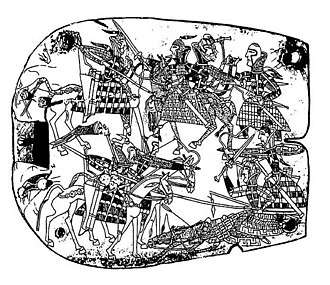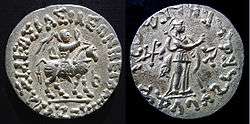Orlat plaques
The Orlat plaques are a series of bone plaques that were discovered in the mid-1980s in Uzbekistan. They were found during excavations led by Galina Pugachenkova at the cemetery of Orlat, by the bank of the Saganak River (a tributary of the Zeravshan), immediately north of Samarkand. Pugachenkova published her finds in 1989.



The plaques are thought to have been decorative belt buckles. They are decorated with battle scenes between soldiers wearing cataphracts, and one hunting scene. The date and attribution of the plaques are disputed, although the consensus tends to suggest a 1st-century CE date.
Yury Khudyakov found numerous similarities between the plaques and other Xiongnu-Sarmatian finds from Mongolia and Altay, particularly a group of plaques retrieved from Tepsei Mount near the Yenisey River, usually attributed to Tashtyk culture.
Pugachenkova believes the plaques were made by the inhabitants of Kangju, thought to have been closely related to the Kushans and Tocharians. The soldiers would be either Sogdians or Sakas, much less probably Yuezhis or Parthians.
References
- Les Saces, Iaroslav Lebedynsky, Paris: Errance, c2006. ISBN 2-87772-337-2
- Худяков Ю.С. Образ воина в таштыкском изобразительном искусстве // Семантика древних образов. Novosibirsk, 1990. Page 112.
- (in Russian) Detailed description of Orlat finds
.jpg)